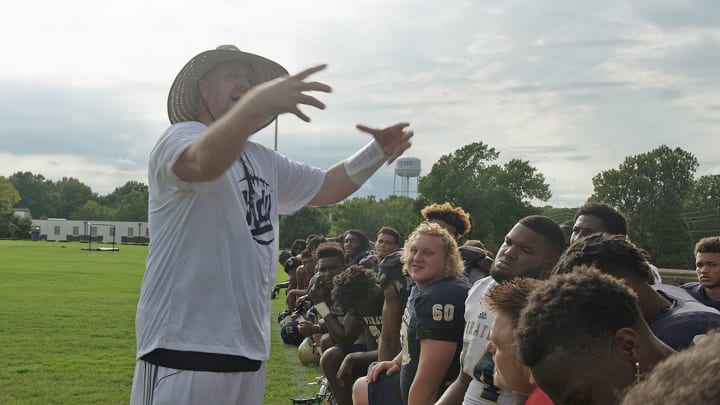Last Chance U Season 3 Is Darker, Dirtier and a Little Less Fun to Watch

The glory days have come and gone for Last Chance U.
The third season of Netflix’s acclaimed docuseries moved from East Mississippi Community College to Independence Community College in southeastern Kansas, promising to revive the show’s magic with a change of scenery. But in some ways, everything feels the same. Technically, the show remains superb, with dazzling cinematography that blends snapshots of rural Americana with spectacular football storytelling. But Season 3 lacks the narrative focus of its predecessors, struggling to juggle plot lines and focusing on a caustic central character who wrecks the show’s balance between heartwarming moments and unfiltered grit.
Many fans of the show sensed trouble when Season 2 concluded with the departure of Brittany Wagner, the EMCC guidance counselor who served as the heart and soul of the entire program. Wagner was the big-hearted character necessary to balance out the insecurity, ego and raw anger flowing through the rest of the program. She railed against coaches, gave her students hope and brought out the best in the team and the show.
While Last Chance U found its fair share of exciting talents and big personalities at Independence, it never replaced Wagner. Without her level-headed humanity, Season 3 felt like a straight shot of hypermasculinity, no chaser. The new season leaves behind Buddy Stephens, the vitriolic EMCC head coach who generated the central controversies of the show’s first two seasons. But it simply upgraded to the swearing and abuse of Independence head coach Jason Brown, a hard-headed, Compton-bred journeyman who comes off as even meaner than Stephens, if that’s even possible.

Brown insists that he’s a player’s coach and that he loves his team, but his coaching style seems to consist of a tirade of abuse. As the season wore on, it becomes almost unwatchable. He opens practices by roaring insults at his players, peppering every sentence with a variety of curses and swearing at his assistant coaches when they disagree with his calls. At one point, Brown implies his intention to cut a player to “teach him a lesson,” only relenting when the player started packing his bags.
That anger spreads to the rest of the team. Players and coaches jaw at each other from the opening scenes of the first episode to the regular season finale. There are scattered moments of team spirit and togetherness, but they sprout from on-field action, when the stacked team (director Greg Whiteley told SI’s Jacob Feldman that he initially flagged Independence as a candidate for Season 3 because of its staggering number of top-100 juco prospects) somehow pulls off another win. Off the field, the team was a mess.
Despite these struggles, some powerful moments still shone through. The fifth episode, “Out Of State,” which cuts back and forth between a triple-overtime thriller and a series of hometown visits with key players, could almost stand alone as an illustration of the dream that football provides for many young men.
When the camera turns to these central characters, the show hits its sweet spot, with the right balance of bone-crunching tackles and heart-wrenching interviews that match the original energy of the show’s first seasons. We met players who lived out of their cars and lost family members to the rough reality of their hometowns, and we saw the humanity that drove them to keep fighting for an impossible dream.
Where the Stars of Last Chance U Ended Up for the 2018 Season
But these moments were too few and far between, with an undue amount of attention given to Brown, perhaps in hope that he would at some point redeem himself. Many of the athletes who received major screen time, such as burnt-out star quarterback Malik Henry, ran themselves into the ground with drama worthy of reality TV. The players whose personalities were more endearing, such as wide receiver Carlos Thompson, spent their time struggling to balance out the caustic environment surrounding the team.
Meanwhile, two of the team’s biggest on-field stars—running back Rakeem Boyd and defensive lineman Emmit Gooden—saw their storylines introduced early on, pushed to the background in the middle of the season and then picked up haphazardly in the final episodes as they signed with Power 5 schools. In fairness, the stories of failed athletes are often more unique and compelling than the handful of success stories. But the balance between the two genres that Season 3 settled on wasn’t fun to watch.
The coach stayed angry. The kids, for the most part, didn’t grow up. And the viewer moved on, feeling a certain emptiness from a series that initially won viewers over with its heart.
